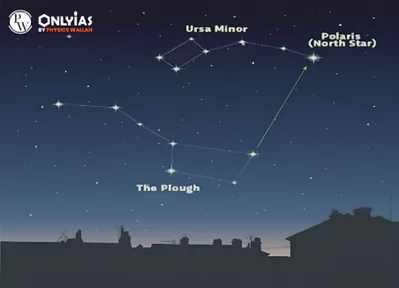Introduction: Exploring the Mysteries of Jovian Planets in Our Solar System
Planets are celestial bodies that orbit stars, and our solar system contains several planets. In our solar system, planets are classified into two main categories: terrestrial planets and gas giants.
Jovian planets, also known as gas giants, are a fascinating group of enormous planets in our solar system. Unlike rocky terrestrial planets, Jovian planets are predominantly composed of gasses, such as hydrogen and helium.
- Jupiter and Saturn are the largest among them, with swirling storms and impressive ring systems.
- Uranus and Neptune, the other two Jovian planets, have unique icy atmospheres and intriguing features, making them a captivating subject of study in planetary science.
Comparative Overview of the Jovian Planets: Jupiter, Saturn, Uranus, and Neptune
| Parameter | Jupiter | Saturn | Uranus | Neptune |
| Size | The largest planet.
It is 11 times wider than Earth. |
Second largest planet after Jupiter | Coldest planet in the solar system | First planet located through mathematical calculations |
| Atmosphere | Rich in hydrogen and helium | Rich in hydrogen and helium | Hydrogen and frozen methane clouds | – |
| Colour | Yellow | Pale yellow due to ammonia crystals in the upper atmosphere | – | – |
| Rings | A faint ring system consisting of several thin and dark rings | 7 rings composed of icy rock and dust | – | 5 rings |
| Number of Moons | 79 moons | 82 moons identified | 27 moons | 14 moons |
| Notable Moons | Europa, Ganymede | Titan, Phoebe, Tethys, Mimas | Oberon, Titania, Miranda, Ariel, Umbriel | Triton, Nereid |
| Special Moon | Ganymede is notable for being the only moon in the solar system known to have its magnetic field. | Titan has nitrogen atmosphere and | – | Triton has a retrograde orbit |
| Rotation Period (days) | About 9 hours and 55 minutes. | 0.45 | 0.72 | 0.67 |
| Revolution Period (years) | 11.86 Earth years | 29.5 | 84 | 165 |
| Axis of Rotation | Tilted relative to its orbital plane, | – | Almost parallel to axis of revolution | – |
| Rotation Direction | West to East | West to East | East to West | West to East |
Dwarf Planets: Characteristics, Classification, and Scientific Significance in the Solar System
Dwarf planets are celestial bodies that orbit the Sun and share some characteristics with planets but do not meet all the criteria to be classified as full-fledged planets.
- Characteristics: Dwarf planets are typically smaller in size than planets and may not have cleared their orbits of other debris, which is one of the criteria used to distinguish planets.
- Classification Criteria: The International Astronomical Union (IAU) categories include being in orbit around the Sun, having sufficient mass for self-gravity to form a nearly round shape, and not clearing its orbital neighborhood.
- Examples: Notable dwarf planets in our solar system include Pluto, Eris, Haumea, Makemake, and Ceres.
- Pluto: It is one of the most famous dwarf planets and was once considered the ninth planet in our solar system.
- It orbits in the Kuiper Belt, a region beyond Neptune, and has a diverse landscape with features like mountains, plains, and a thin atmosphere.
- Ceres: Ceres is the largest object in the asteroid belt between Mars and Jupiter.
- It was the first dwarf planet to be visited by a spacecraft (NASA’s Dawn mission) and is known to have water ice beneath its surface.
- Pluto: It is one of the most famous dwarf planets and was once considered the ninth planet in our solar system.
- Scientific Interest: Dwarf planets provide valuable insights into the diversity of objects in the solar system and its early formation.
- They also offer clues about the conditions and processes that shaped the outer regions of our solar system.
- Reclassification: The classification of Pluto as a dwarf planet in 2006 by the IAU sparked debate and discussions about the definition and classification of celestial objects, leading to a refined understanding of the terms used in planetary science.
International Astronomical Union
|
The Pole Star: Navigation Guide and Cultural Significance
- Pole star is also known as North star, situated in the north direction of the earth’s axis and always remains in the same position in the sky. In ancient times, it has been used by the people to determine the North direction. As per Indian mythology, it is known as Dhruva Tara, honored by Lord Vishnu.

- It is not visible from the Southern Hemisphere.
Previous Year Question (Prelims)
Among the following, which planet takes maximum time for one revolution around the Sun? (UPSC CSE 2003)
- Earth
- Jupiter
- Mars
- Venus
Ans: b
In order of their distances from the Sun, which of the following planets lie between Mars and Uranus?(UPSC CSE 2008)
- Earth and Jupiter
- Jupiter and Saturn
- Saturn and Earth
- Saturn and Neptune
Ans: b
Which one of the following planets has largest number of natural satellites or moons?(UPSC CSE 2009)
- Jupiter
- Mars
- Saturn
- Venus
Ans: c
Q. A person stood alone in a desert on a dark night and wanted to reach his village which was situated 5 km east of the point where he was standing. He had no instruments to find the direction but he located the polestar. The most convenient way now to reach his village is to walk in the_________________________________________________ [2012]
- Direction facing the polestar
- Direction opposite to the polestar
- Direction keeping the pole star to his left.
- Direction keeping the pole star to his right.
Ans: c

 GS Foundation
GS Foundation Optional Course
Optional Course Combo Courses
Combo Courses Degree Program
Degree Program











